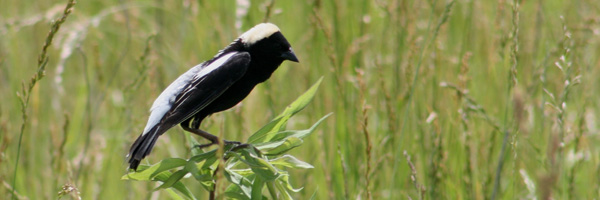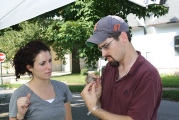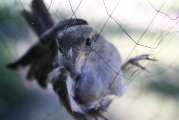
ECOLOGY & CONSERVATION BIOLOGY
IN THE MILLER LAB

ECOLOGY & CONSERVATION BIOLOGY
IN THE MILLER LAB
Contact: Jason Fischer


We are interested in looking at individual condition and behavior of songbirds in conjunction with habitat and landscape characteristics to see how these factors influence population-level processes. We work at private residences and education centers along a gradient of urbanization in Champaign County in east-central Illinois. At these sites, we capture birds, assess their condition, and mark them with radio frequency identification (RFID) transponders (i.e., PIT tags). We measure condition in a number of ways, including quantifying subcutaneous fat and muscle size, calculating an index of energy reserves (mass adjusted for structural size), and measuring growth bars of tail feathers. These bars reflect the nutritional condition of the bird when the feather was grown, such that wider bars reflect an individual in better condition. Each site is outfitted with a bird feeder with an RFID reader attached to it that logs the timing and duration of every visit from a bird marked with a PIT tag. With this information, we can quantify changes in foraging behavior in response to changes in landscape/habitat context, weather, and individual condition (as measured at the time of capture). Data from the PIT tags also enable us to estimate survival of the group of birds using each bird feeder and to examine how survival changes with urbanization. We hope to use these findings to tease apart the relationships among individual condition and behavior and their ramifications for survival in the context of urbanization.
Funding: The National Science Foundation; The Binky Foundation; Program in Ecology, Evolution, and Conservation Biology (University of Illinois); Champaign County Audubon Society; Illinois Ornithological Society